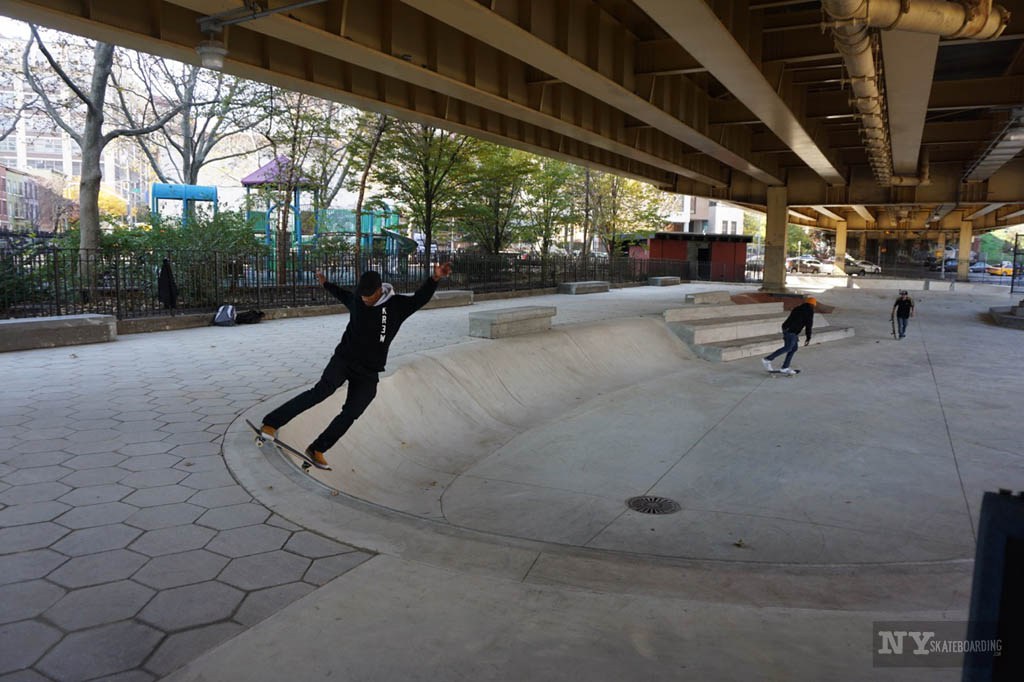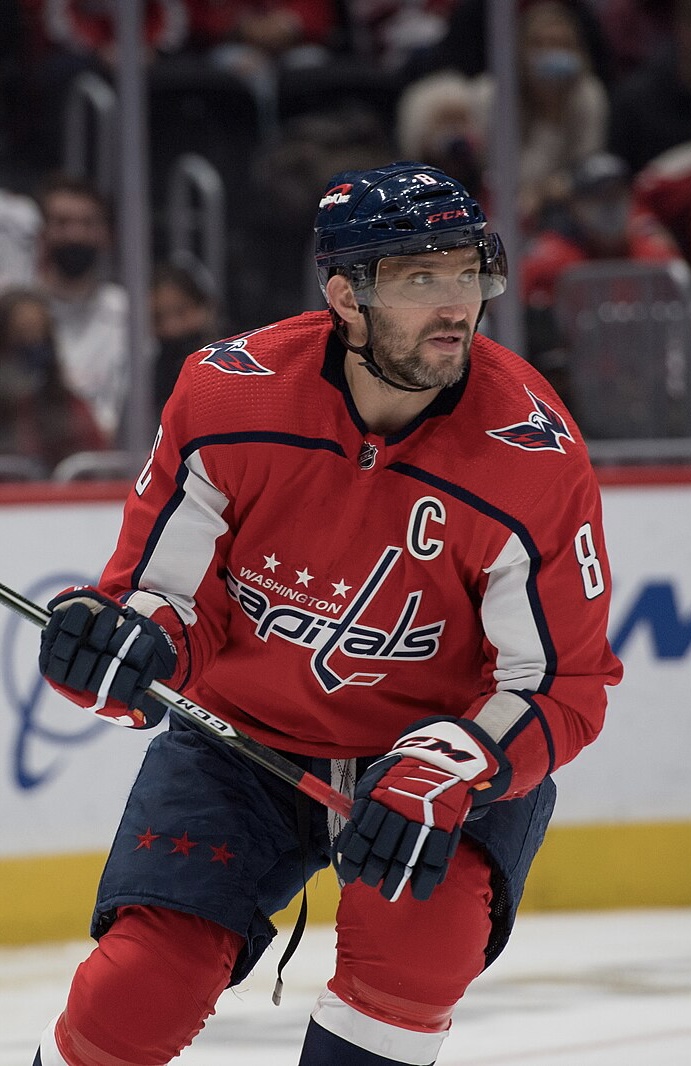Located in Dumbo, Brooklyn, under the Brooklyn-Queens Expressway, Golconda Skatepark is a constant hub of activity, even on a Tuesday morning. The distinct sound of boards hitting the concrete pavement can be heard as skaters of all ages ride through the 18,000 square foot skate park. Steve Rodriguez, the so-called “Mayor of New York City skateboarding” and designer of the space, looks on with a proud gleam in his eyes.
“Skateboarding is one of the only activities where age doesn’t matter,” he says, “Skateboarding is really weird in the sense that it’s this level playing field. What other activity is like that?”
Rodriguez presents an optimistic view of skating and the associated culture. He thinks that the former “rich kid” sport is becoming increasingly diverse and that people of all ages and backgrounds now skate. But have we really left behind the stereotype of the white male skater?
Since its emergence in California in the mid-20th-century, skateboarding has become increasingly popular and made its way into the mainstream. Long gone is the image of the renegade, ruffian skater; enter the straggly 10-year-olds with padding, helmets, and knee and elbow pads.
Rodriguez attributes this shift to changes in the culture, and skateboarding becoming more accepted. “There’s sort of a new generation of kids that never skated before,” says Rodriguez. His 7-year-old son, Shiki, has been skating since he was four. “It’s kinda crazy,” he says, “I know more kids under ten that skate than people over ten. Plus, with skateboarding going to be in the Olympics in 2020, it makes parents feel like it’s a normal thing, like baseball, basketball, whatever— what they consider ‘normal’ sports.”
Photo by Ainhoa Petri-Hidalgo
“More kids today in the United States start skateboarding than start playing baseball,” says Rodriguez, “And you know baseball is considered the national pastime?”
Rodriguez started skating in the ‘80s, a much different time. “It was portrayed and seen as like, ‘this is what the bad kids do’, but I actually wasn’t a bad kid,” he says.
Like Rodriguez, Helene Stapinski, now an author and freelance reporter for The New York Times, grew up skateboarding in New Jersey. She encountered different challenges. “I grew up in the ‘70s, and I was 14 when skateboarding exploded. I skateboarded, but it was all boys. It was me and my best friend; we were girls, but everyone else was a boy, and you had to be a tomboy to do it.” According to Rodriguez, “It has a lot to do with parents saying, ‘That’s for boys.’”
A lot has changed since then. The emergence of female skateboarders, Rodriguez says, is “something you would never see before.” Many women have fought for their place in the sport. “Remember that show, Family?”, Stapinski asked Rodriguez, “Kristy McNichol? She was a skateboarder, and that was really good for girls because it was suddenly like, ‘We could do that.’”
Luca, a young skater, is a regular at Golconda. In his well-worn yellow tank top and baggy jeans that lie low on his hips, held up only by a loose belt, he resembles the clichéd skater bum. “I smoke weed, I (expletive) around, but I’m not a violent person at all, you know,” he says. Luca weighed in on the topic of gender as he rolled a cigarette, saying, “There’s a lot of dudes at the skatepark, but that’s changing slowly. I’ve seen a lot of female skaters.”
He says he’d never himself witnessed instances of cat-calling or harassment, but raises some of the contradictions of skating’s past and its present. “It’s a park filled with dudes usually, so of course there’s going to be some aggression, I feel like, just because dudes like to look at pretty women,” he says
“The majority of the skater community I feel like is pretty liberal and accepting of females and their power,” says Luca before hopping on his board and skating through the park, cigarette in hand, with a serene look on his face. However, he “[doesn’t] think anybody’s really sexist.”
Image courtesy of the New York State Department of Transportation
Rodriguez, like many other skaters, also believes in skateboarding’s continued evolution. To him, skateboarding is unique, a level playing field in comparison to other sports. Rodriguez says he can skateboard with his 7-year-old son, Shiki, and his friends. “You wouldn’t play tennis with little kids,” says Rodriguez, “but you can have a skateboarder that’s eight years old that’s as good as any skateboarder.”
“I feel pretty normal [skating with older kids],” says Shiki. Younger skaters reaffirmed this notion of unconditional acceptance and said that they were welcome regardless of their years. When asked if they had experienced prejudice based on their age, children at the skatepark responded with an adamant “no, never.”

In regards to race, the attitude is similar. “I think skating is colorblind,” says Rodriguez, “It’s just not a thing. Like no one thinks, ‘Oh, these are the black skaters’ or ‘these are the white skaters.’” In an interview with Vice, Ray Barbee, a black skateboarding pioneer turned musician from San José, California, reiterated this sentiment saying, “Skaters have issues, but color’s not one of them. Ever. Not that I’ve experienced, and I love that.”
“We just want to skate, you know?”, says Braden, a 15-year-old skater, “It’s mainly a Caucasian activity, but there’s definitely not any discrimination that I have run into between skaters and like minority skaters.”
In the eyes of the skaters, Golconda Skatepark embodies how accepting and diverse skate culture has become. However, observing the people around, this vision fell a little short. While exact numbers and demographics can be elusive, a study conducted among professional skateboards by the United States Sports Academy revealed limited diversity among its participants. Of the 30 survey participants, 73% were Caucasian, 16% were Hispanic, and a mere 1% were African American. According to the Public Skatepark Development Guide, 77.1% of all skaters are male, whereas 83.4% of core skaters are male. Conversely, 23.9% of all skaters are female, while 16.6% of all core skaters are female.
Photo by Ainhoa Petri-Hidalgo
Statistically, skateboarding continues to be a rich, white, male sport, but the previous skateboarding mentality has changed and become more accepting. Regardless of what the statistics reveal, Luca put it aptly: “At the end of the day, we’re all at the same skatepark.”
By Ainhoa Petri-Hidalgo


































































